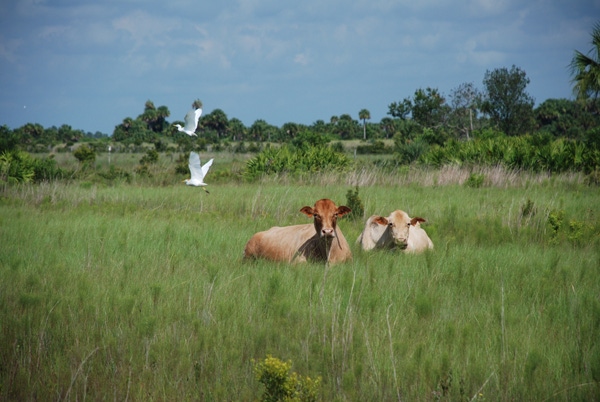Much has been said and written about ranch sustainability. When you boil it down, however, it’s largely a matter of working with nature.
May 25, 2017

By 2050, the planet’s population is estimated to grow from the current 7 billion to more than 9 billion, while the amount of agricultural land is expected to shrink. Simply put, this means we’ll need to produce more food with less resources in order to feed the world. For the beef industry to continue to be part of the solution, it must develop production systems that are more in line to nature.
Beef can play an important role in providing the world a nutrient-dense food that is also sustainable. However, to accomplish this, a beef production system must take advantage of key components that can make it more sustainable, which can be defined as the ability of beef to be produced in sync with nature.
Ranching in harmony with nature is one of the key strategies for decreasing the impacts while increasing the profitability and sustainability of beef production.
Grazing management is key, and is the single greatest sustainability advantage beef production has to offer, which is the ability of cattle to self-harvest a self-renewing feed source, grass.
The ability of the beef production system to turn grass, a resource unpalatable to humans, into a nutrient-dense food is a unique competitive advantage that is yet to be fully appreciated. For example, it isn’t a topic within the sustainability discussion occurring among stakeholders looking for solutions to feeding a growing population while also tackling climate change. Beef can do both because of two unique natural processes at the heart of beef production and grazing.
The first of these is photosynthesis, an amazing process within a plant (such as grass) that turns water and carbon dioxide (CO2) that the plant takes in from the air, into oxygen (O2), which the plant releases back into the air and carbohydrate (sugar) which the plant uses to supply its energy needs.
Second, and just as amazing, are the intertwined relationships between soil nutrients, soil microbes and plant roots. Soil isn’t just a medium to support plants. Healthy soil is made up of highly complex symbiotic relationships between plants, microbes and sources of nutrients. What’s more, a healthy soil ecosystem is one of earth’s primary carbon sinks.
These are truly miraculous processes that make grazing possible, and give beef production a unique sustainability and competitive advantage.
Here are five tips to develop a sustainable grazing and forage system that is in sync with nature:
1.Calve in harmony with green grass
Calving in harmony with green grass minimizes hay feeding, and can increase weaning rate and general herd health. In practical terms, this generally means calving around the same time as the local populations of wild ruminants such as deer, elk or antelope.
2. Extend the grazing season to decrease or eliminate feeding of purchased and harvested feeds
This takes advantage of cattle’s ability to “self-harvest” grass, a renewable feedstuff. This can be done by filling forage gaps with grazable forages and by applying changes in grazing management, resulting in a tremendous positive effect on the bottom line.
3. Develop a cowherd that is capable of high reproduction efficiency on a forage-based system.
Today’s cattle genetics are not all the same, and the genetics currently found in many cowherds are not capable of producing a marketable calf year after year within a high forage based system. Changing cowherd genetics to match a management strategy that is in sync with nature is a critical consideration.
4.Use holistic grazing tools to improve efficiency.
Improving grazing management by applying the principles of adaptive holistic grazing leads to greater ranch sustainability and economic viability. Most leading ranches use some form of rotational grazing based on a grazing management plan that focuses on grazing grass that is prepared to endure the rigors inherent with grazing. Utilizing a rotational grazing program that mimics the movements of the historic herds of herbivories is key to ranching in harmony with nature.
5.Stop using your grandfather's forages; we have better genetics available.
Modern forage genetics provide varieties of grass that are much better able to endure management intensive grazing, with better yields, higher nutritional levels, and improved persistence. Stop using your grandfather’s forages – many of the grass varieties used in forage system today are 50- to 70-year-old genetics, even though much better varieties are available. Grazing systems in sync with nature rely on providing cattle within a high forage system, which should include high quality forages to maintain efficient production.
Ranching in harmony with nature requires a heightened reliance on well managed grazing to fill the nutritional needs of the cowherd. The basis for the sustainability of the entire beef production system, is the capacity to harvest grass, a renewable source of feed, and turn it into a nutrient dense food. A ranch can contribute to the beef industry’s sustainability by improving it grazing management to be more in sync with nature.
Weech is a consultant and adviser on sustainable agricultural projects. Contact him at [email protected].
About the Author(s)
You May Also Like
.png?width=300&auto=webp&quality=80&disable=upscale)
.png?width=300&auto=webp&quality=80&disable=upscale)

